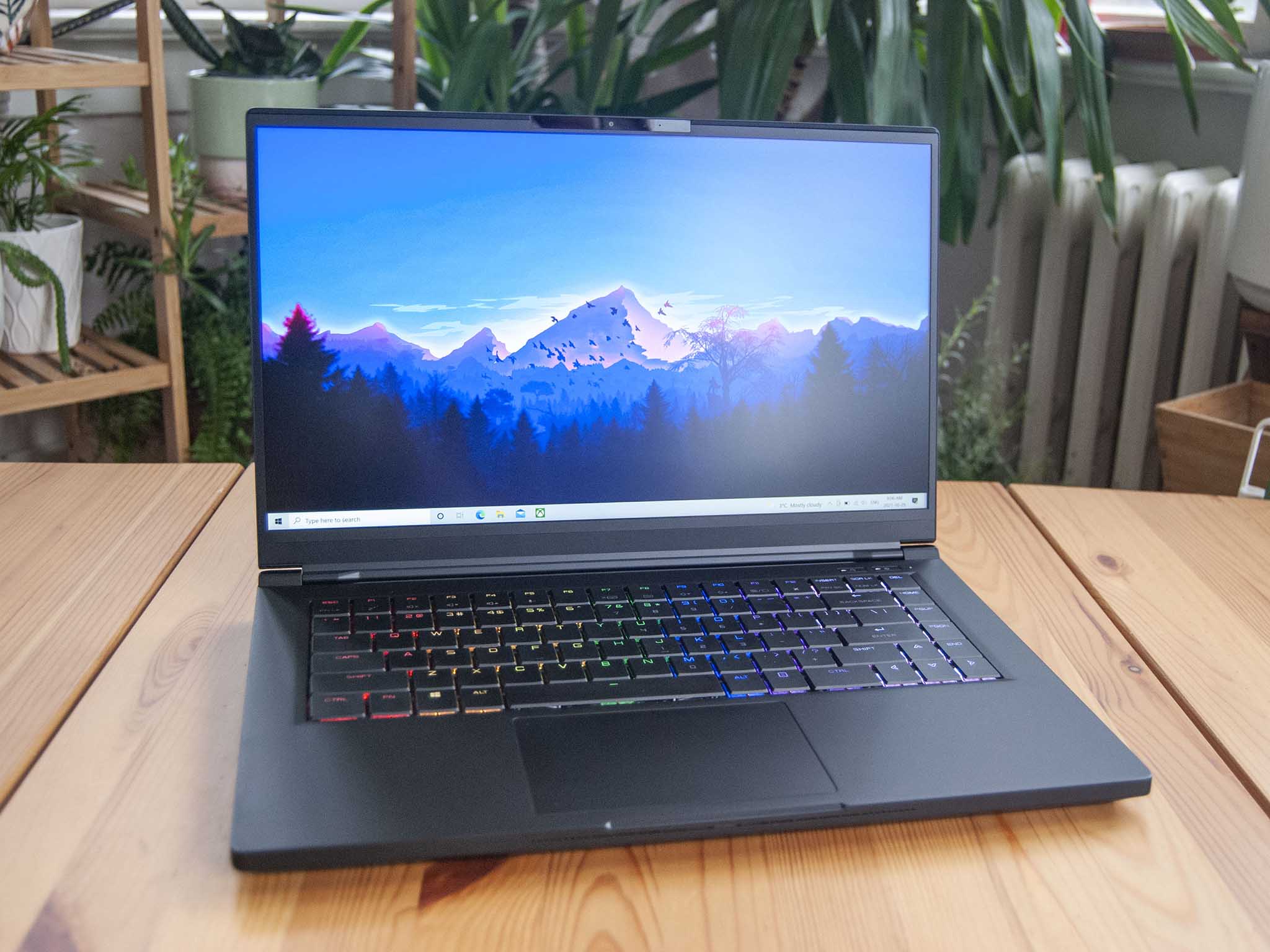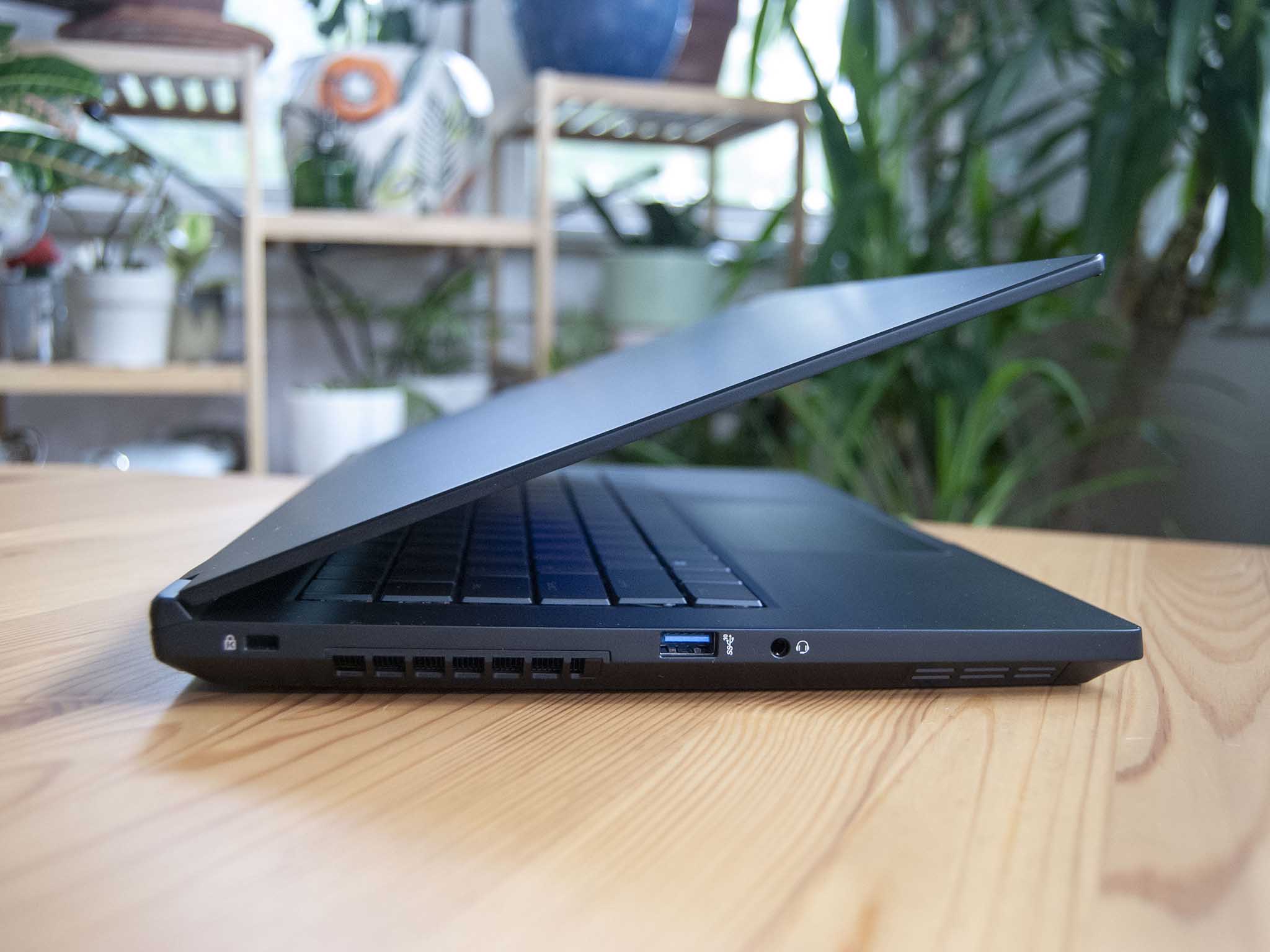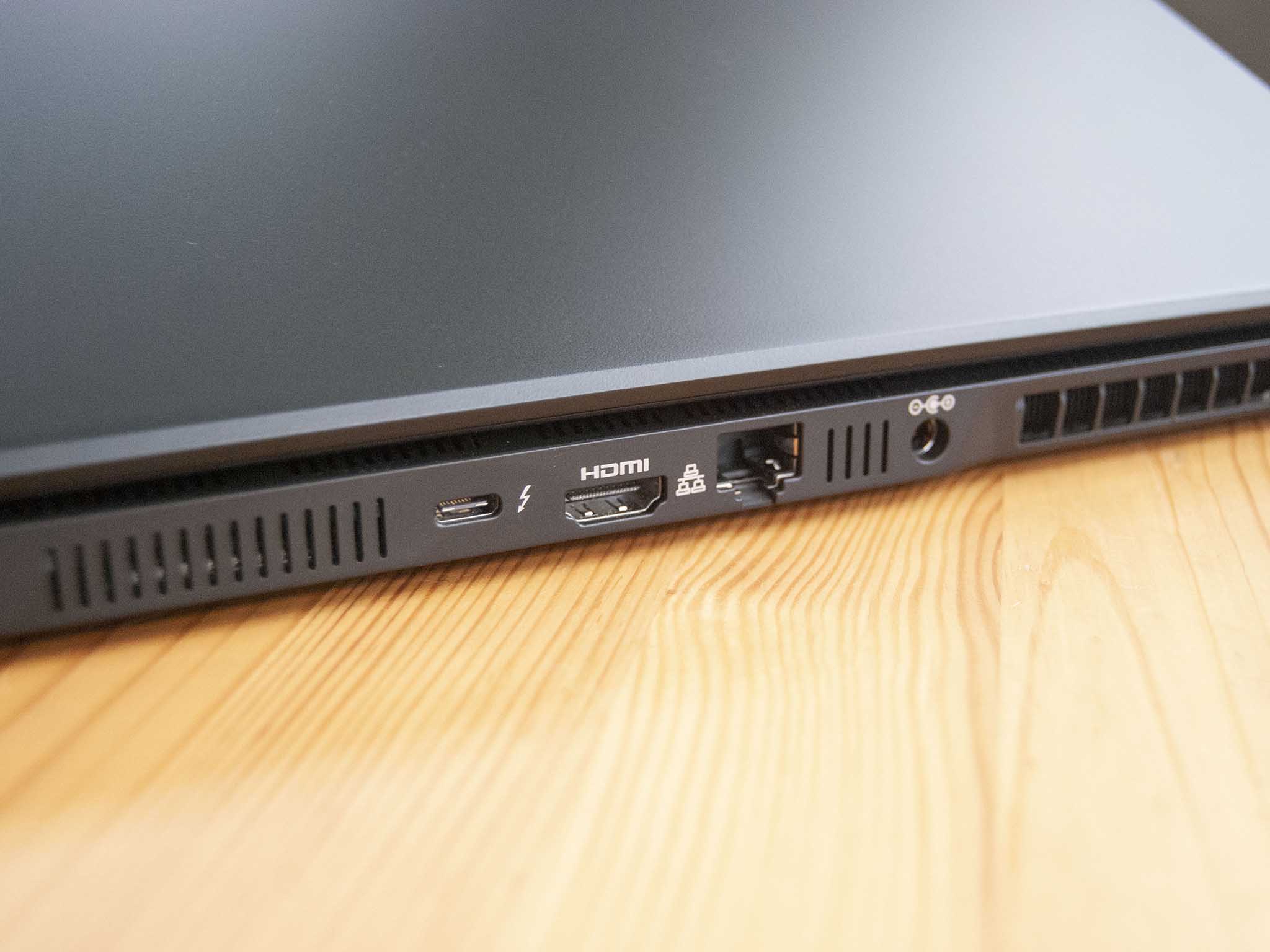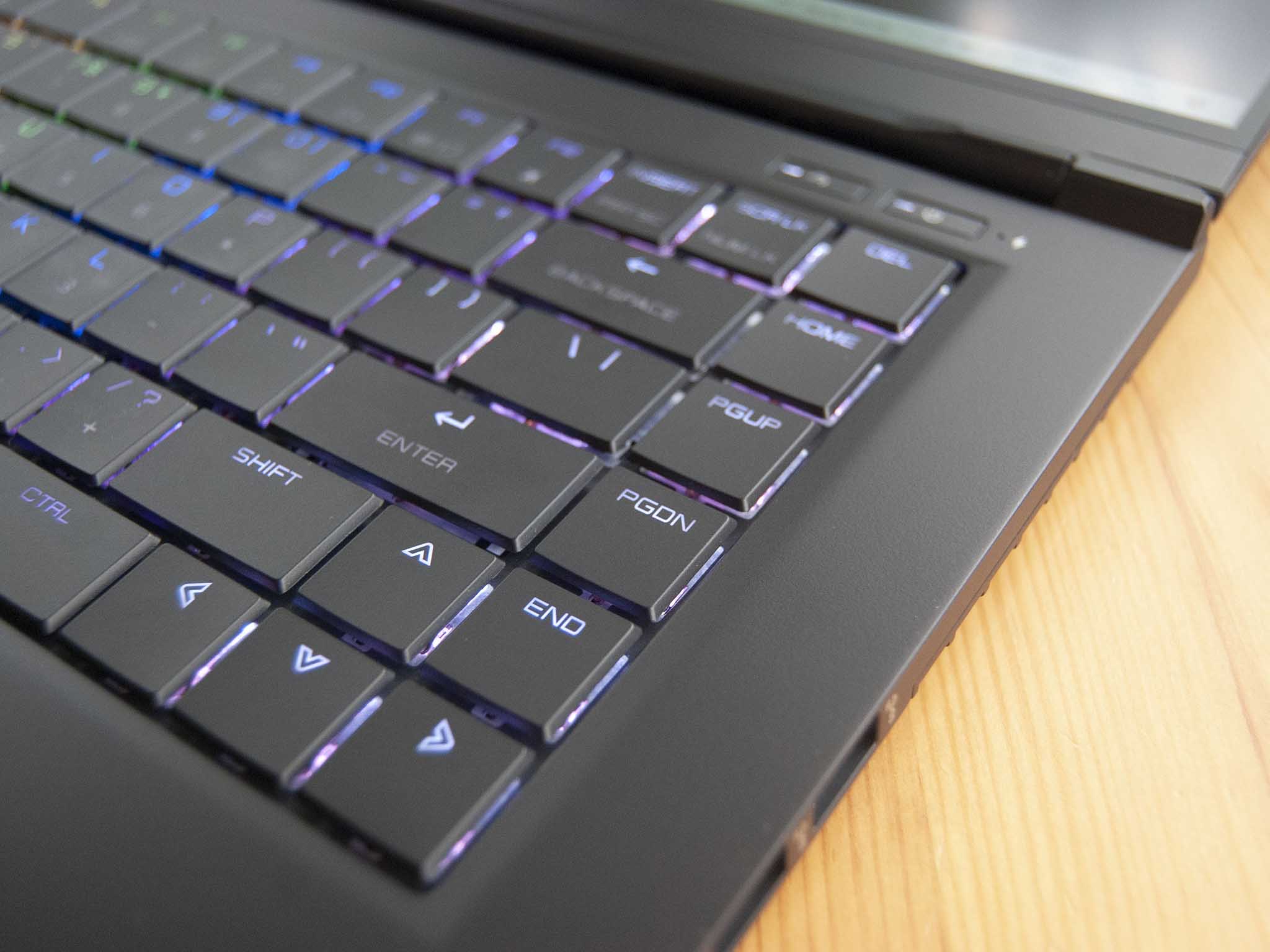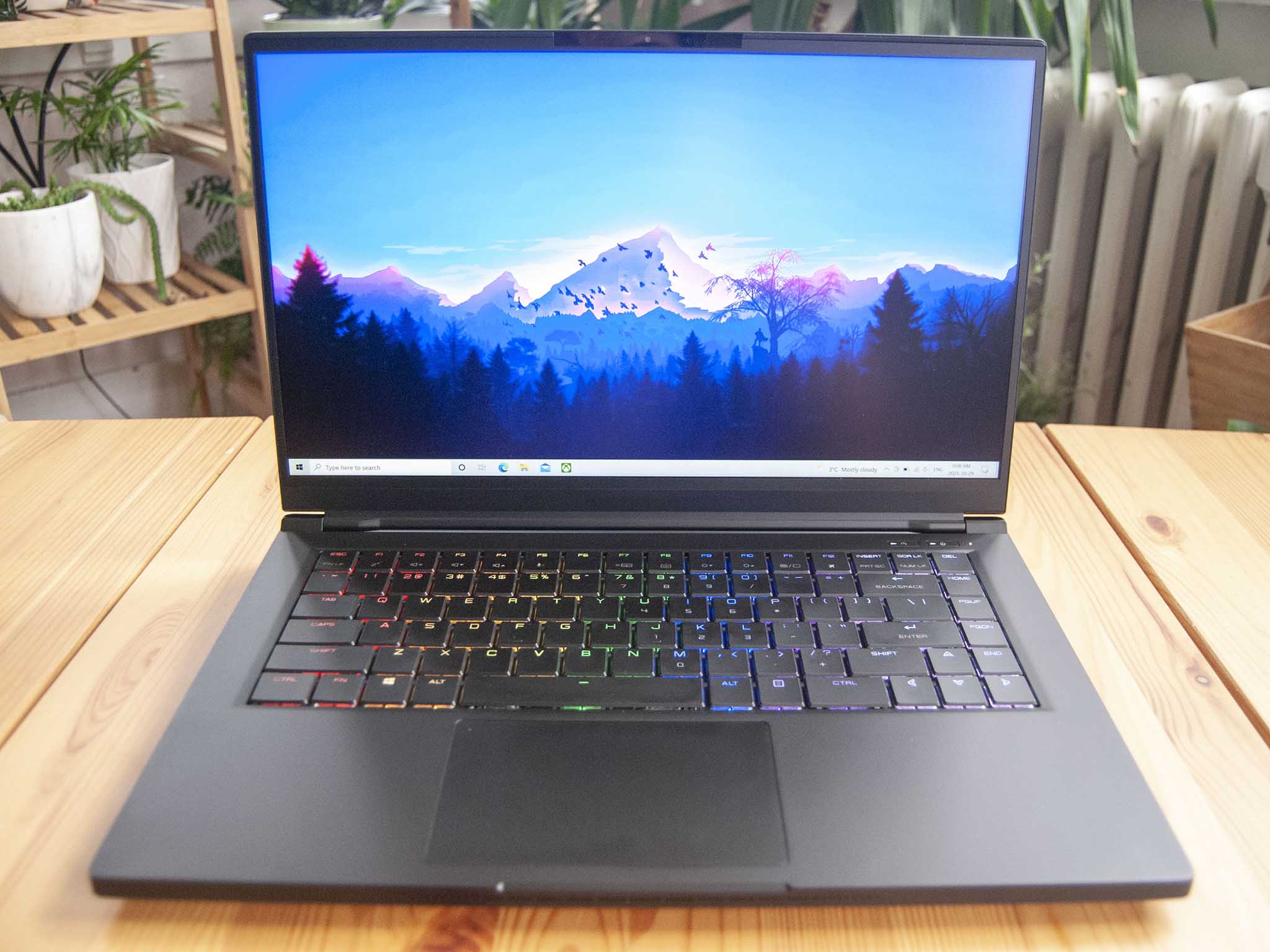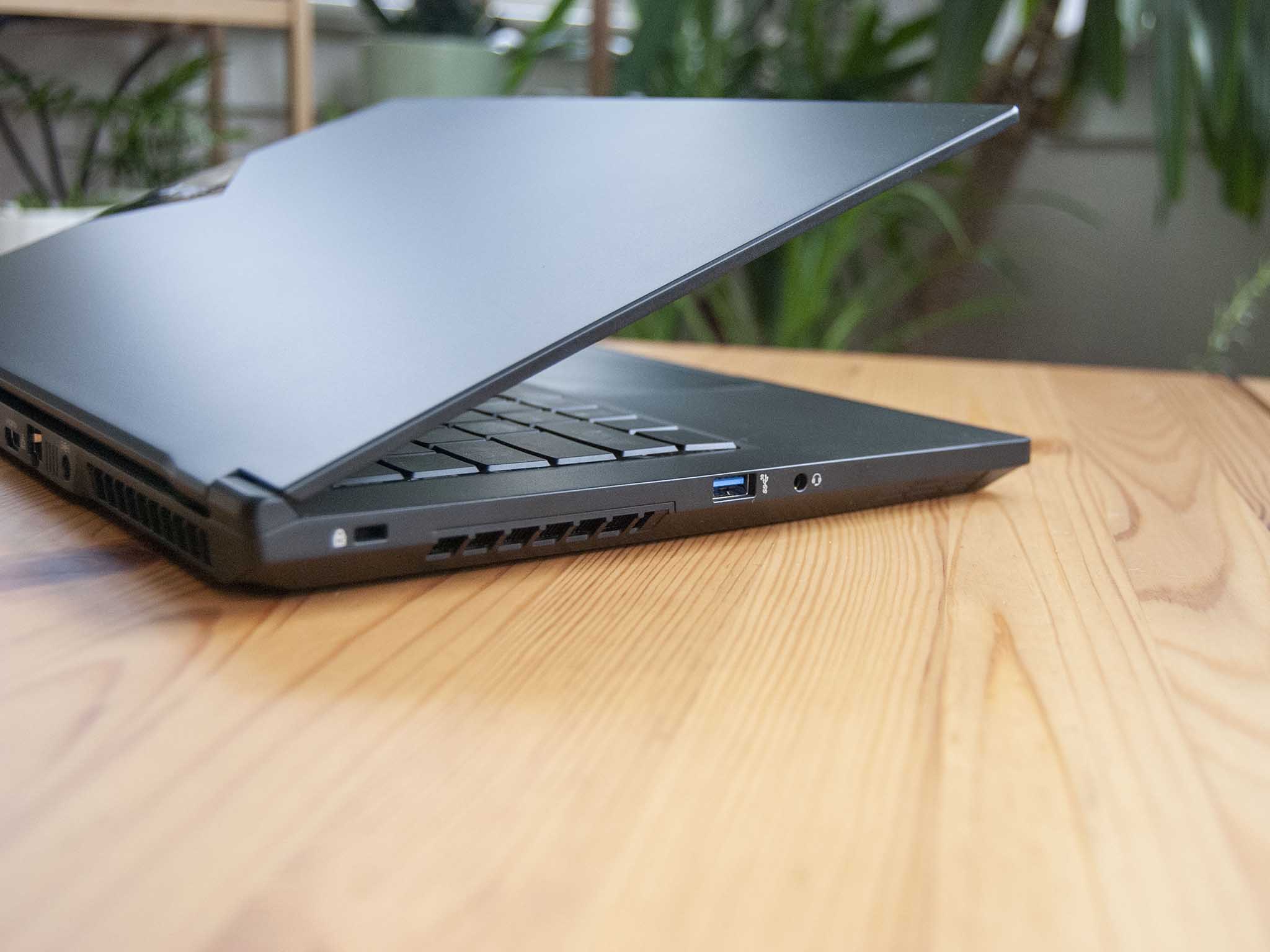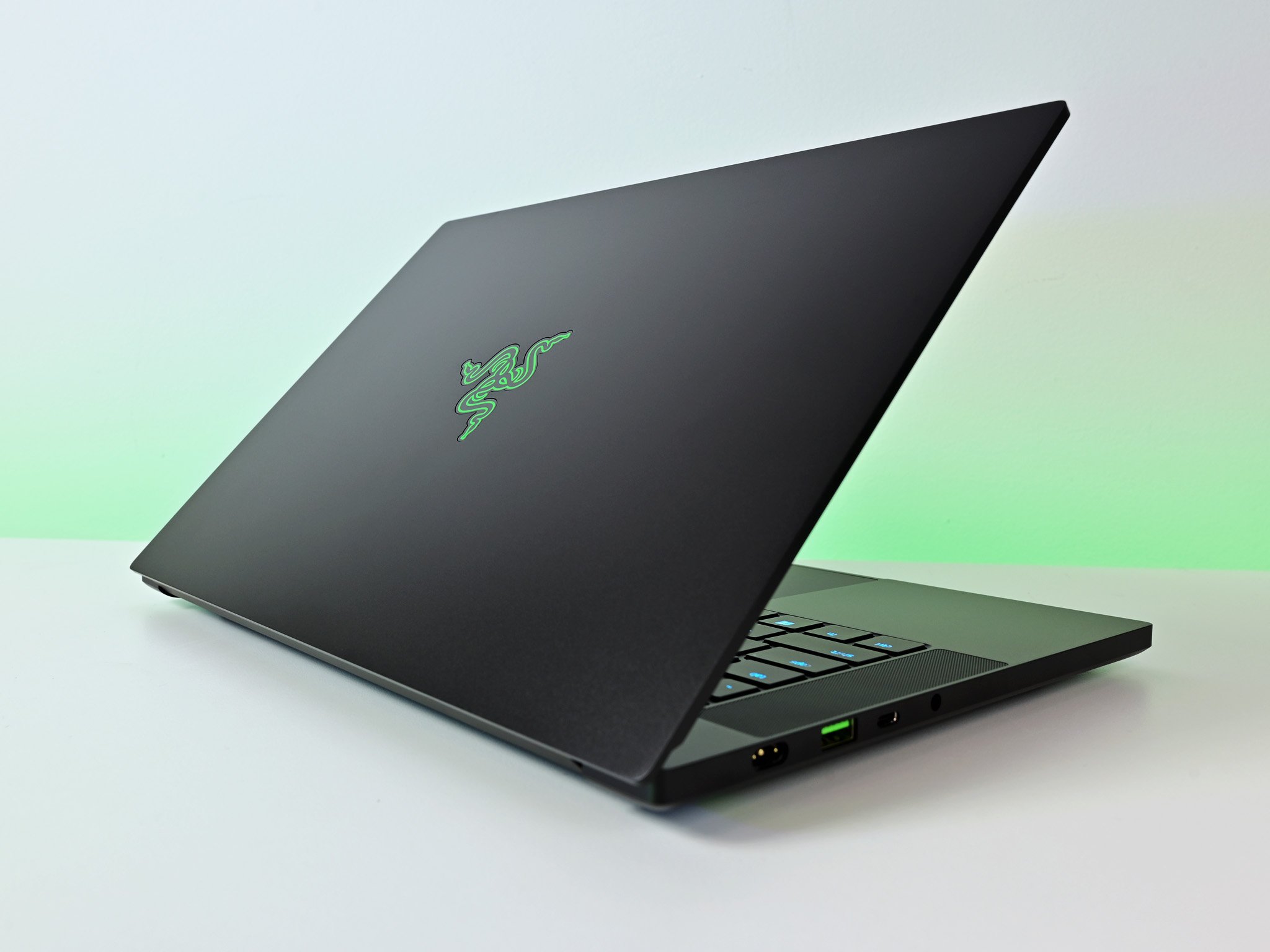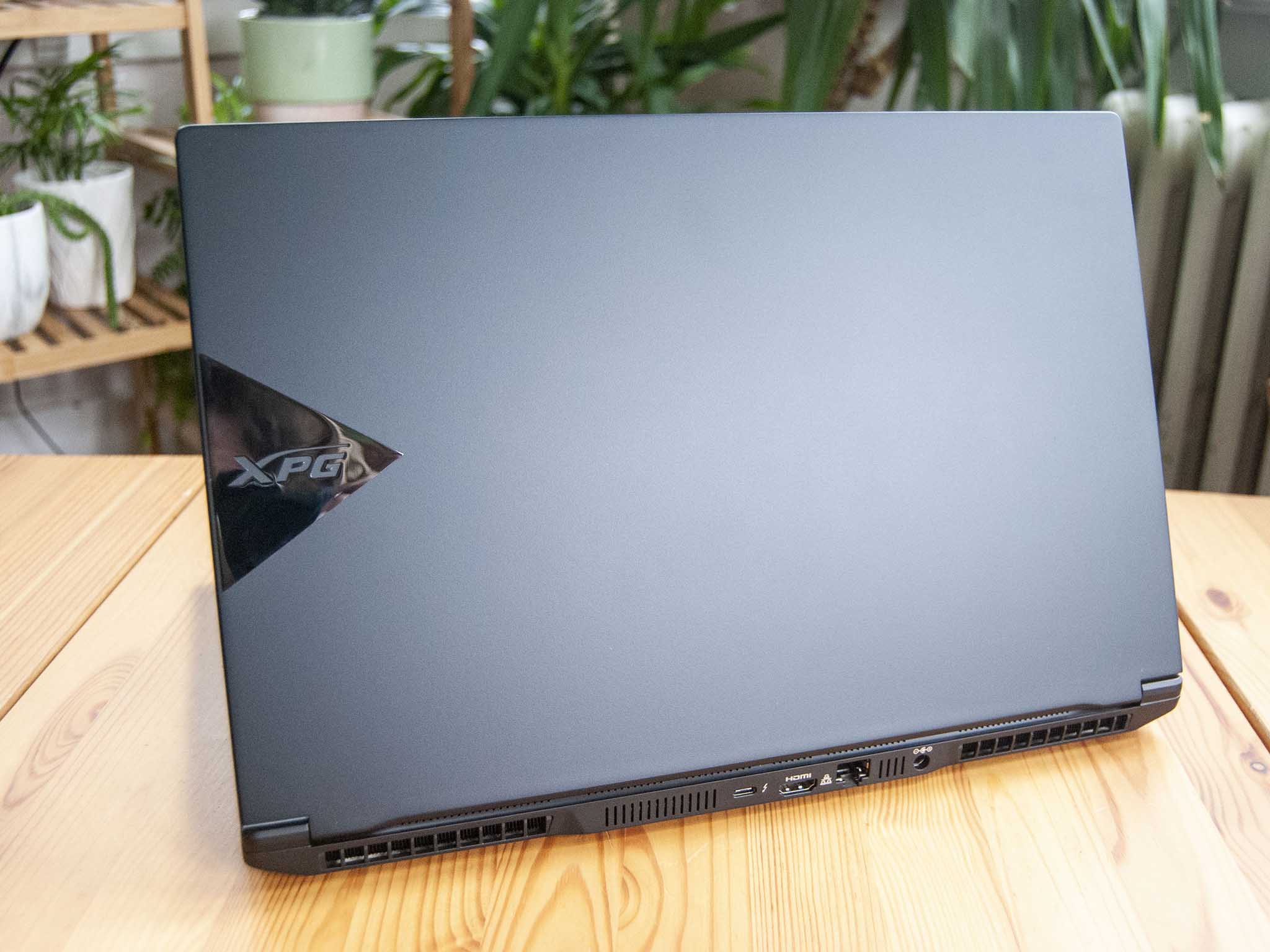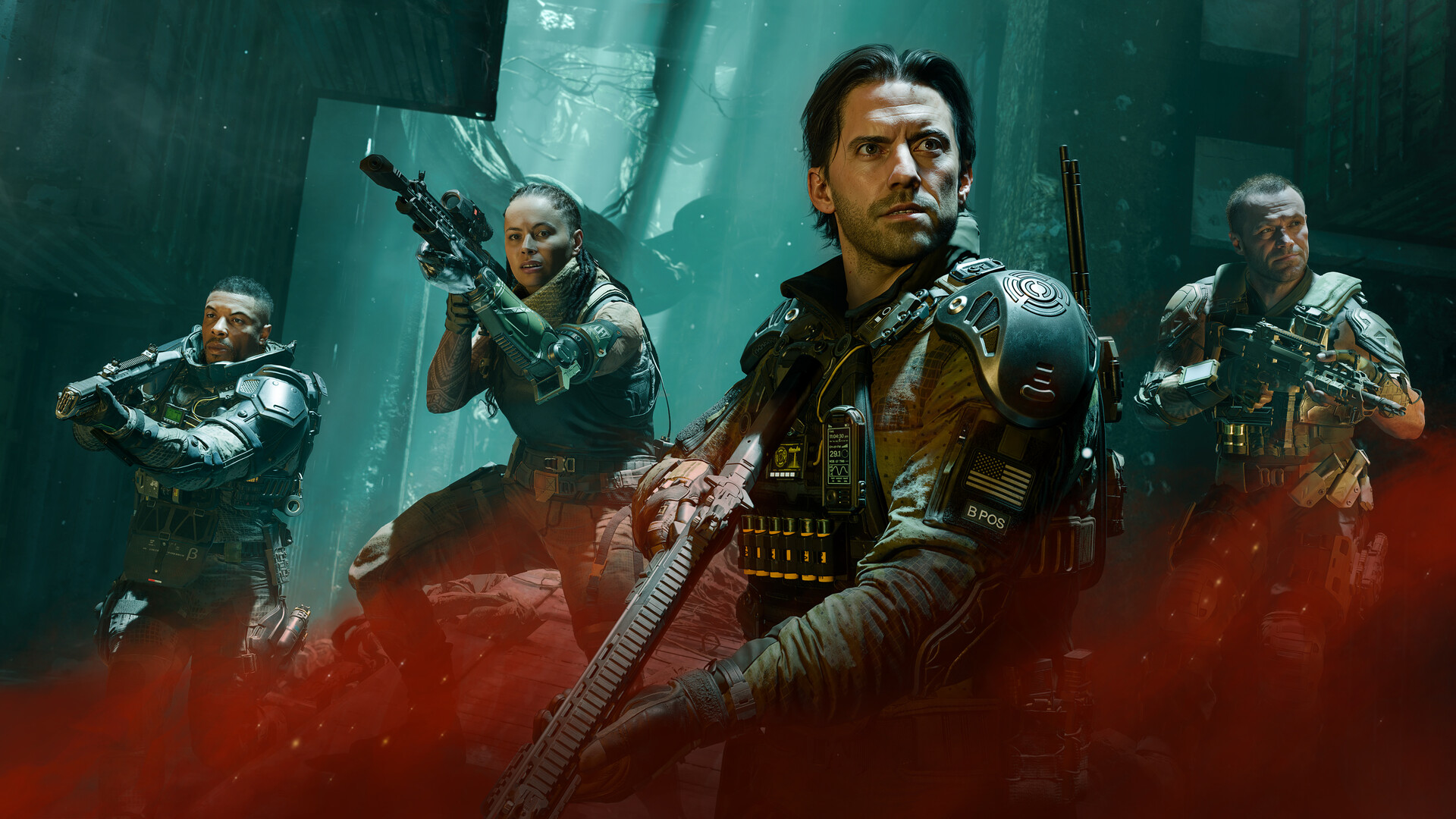ADATA's venture into the world of Ultrabooks and gaming laptops that began a couple of years ago with the XPG brand has delivered us a few excellent devices. I absolutely loved the XPG Xenia 14 as a lightweight productivity option, and the original XPG Xenia 15 (2020) gaming laptop was an excellent foundation on which the company could build.
I now have some of the company's continued progress in-hand for testing; the XPG Xenia 15 KC for 2021 is back with updated performance hardware, fresh ports, a new display, and more. I've been using it for a couple of weeks to see where it excels and whether or not it's worth your money.
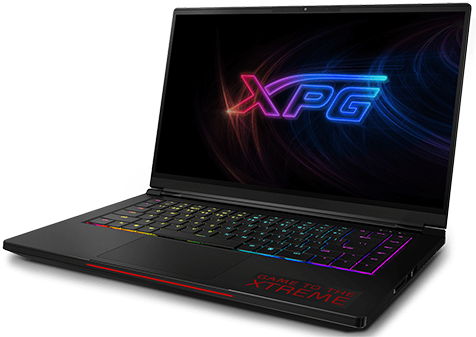
Bottom line: XPG's Xenia 15 KC, refreshed for 2021, builds on the strong foundation we first saw in the 2020 Xenia 15. It can absolutely shred modern games thanks to the provided performance hardware, and everything looks crisp and colorful on the QHD display. Extra features, like Thunderbolt 4, IR camera, HDMI 2.1, PCIe 4.0 SSD, and per-key RGB lighting for the optical mechanical keyboard, are wholly appreciated.
Pros
- Tons of performance
- Speedy RAM and SSD are upgradeable
- QHD display with 165Hz refresh rate
- Included Intel software is a step up
- IR camera, Thunderbolt 4, HDMI 2.1
Cons
- Fans run loud under full load
- Key actuation is sometimes finicky
- Some throttling due to excess heat
XPG Xenia 15 KC: Price, availability, and specs
XPG supplied Windows Central with a review unit of the Xenia 15 KC gaming laptop refreshed for 2021. This can be considered the second generation of the laptop, and it comes with quite a few upgrades. Our review unit has inside an 11th Gen Intel Core i7-11800H processor (CPU), delivering considerably better performance than the 9th Gen Intel Core i7 in the 2020 model.
The 2021 model again has dual 16GB stick of RAM for a total of 32GB, but it's been upgraded to DDR4-3200MHz from DDR4-2666MHz. RAM is upgradeable after purchase. As for storage, XPG has moved to its own Gammix S70 PCIe 4.0 drive sized at 1TB. There's an extra M.2 slot available if you'd like to add storage, and the factory-installed drive is accessible for upgrades.
Graphics have been bumped up to a NVIDIA RTX 3070 Laptop GPU, an upgrade over the RTX 2070 Max-Q card in the 2020 model. One final major difference is the display. You can now enjoy a 1440p picture with a 165Hz refresh rate, up from 1080p with a 144Hz refresh rate.
This model costs about $2,400 and is available at Amazon. This is about $1,000 more than the previous model, though the upgrades to performance hardware, display, and features don't come without a cost.
Following are the exact specs as found in the review unit.
All the latest news, reviews, and guides for Windows and Xbox diehards.
| Category | Spec |
|---|---|
| OS | Windows 10 Home |
| Processor | 11th Gen Intel Core i7-11800H 8 cores, 16 threads |
| RAM | 32GB (2x16GB) XPG DDR4-3200MHz |
| Graphics | NVIDIA RTX 3070 Laptop |
| Storage | 1TB M.2 NVMe PCIe 4.0 XPG Gammix S70 Extra M.2 slot |
| Display | 15.6 inches 2560x1440 (QHD) 165Hz refresh rate IPS, Matte |
| Ports | Thunderbolt 4 Three USB-A 3.2 (Gen 2) HDMI 2.1 Ethernet SD card reader 3.5mm audio |
| Audio | Dual speakers |
| Wireless | Intel AX201 Wi-Fi 6 Bluetooth 5.2 |
| Camera | Front-facing 720p IR camera for Windows Hello |
| Keyboard | Optical mechanical Per-key RGB |
| Touchpad | Precision |
| Battery | 94Wh |
| Dimensions | 14 x 9.2 x 0.8 inches (356mm x 234mm x 21mm) |
| Weight | 4.2 pounds (1.94kg) |
| Color | Black |
| Material | Magnesium alloy |
Similar build, new features
XPG Xenia 15 KC: Design and features
The Xenia 15 KC (2021) is a lot like the previous 2020 model. It's still using a Tongfang reference design for the chassis, with a matte black finish and magnesium alloy construction. There's not a whole lot of flash, but that's OK for a lot of people. An XPG logo on the lid and a customizable RGB light bar along the front edge are the most you'll get when the laptop is closed. It still weighs in at around four pounds and has the same dimensions as the older model.
The USB-C port has been upgraded to Thunderbolt 4 for better performance, and all three USB-A ports are now 3.2 (Gen 2). HDMI 2.1 is now included for better video output, and you still get Ethernet, 3.5mm audio, and an SD card reader. The more permanent ports — HDMI, Ethernet, Thunderbolt, and power — still reside on the back edge of the laptop for easier cable management, with USB-A, 3.5mm audio, and SD card reader living on the sides. For added security, there's a Kensington lock slot.
Opening the laptop reveals an optical mechanical keyboard with per-key RGB lighting that's customizable through onboard Intel NUC Software Studio. It's essentially the same keyboard as on the 2020 model, and I still enjoy it for gaming and productivity work. Full-size arrow keys, an Fn-accessible number pad, and dedicated nav keys are all appreciated. After spending quite a bit of time with the keyboard, I did notice that you really need to strike the center of some of the larger keys (Shift, Tab, Space) to get them to actuate. It's not bad, but it takes some getting used to.
As for the Precision touchpad, it's a great alternative to a gaming mouse when you need to get some work done. It's large, the glass surface is smooth, and it tracks well. There's even a double-tap toggle in the corner that allows you to quickly enable and disable the touchpad when gaming.
There's still no camera shutter for extra privacy, but an IR sensor for Windows Hello makes a return. This isn't something you see on a lot of gaming laptops, but it is appreciated. The front-facing 720p camera does an OK job for standard video conferencing, but if you're planning on a career streaming video games, something from our best webcam roundup will fare much better.
A single speaker is situated on both sides of the laptop. Instead of being strictly down-firing, the chassis now has extra cutouts on the side to help get sound up and away from the laptop. The speakers work fine for casual gaming when not every footstep needs to be heard clearly, but don't expect to be wowed. Fan noise does interfere with audio when the laptop is under full load.
Overall, I still like the design of this laptop. It's understated, it's fairly light considering what's all contained inside, and the port layout is smart. One thing I don't like is the inclusion of side exhaust vents; they'll blow hot air onto your mouse hand whether you're a lefty or a righty. I don't think removing them is an option, as the laptop is too thin for just a couple of exhaust vents along the back next to the ports. It's something you'll have to put up with when cramming as much performance into a thin body.
More pixels
XPG Xenia 15 KC: Display
The Xenia 15 KC now sports more pixels for its 15.6-inch display with a bump up to 2560x1440 (QHD) from 1920x1080 (FHD). The IPS panel has a matte finish that does an excellent job of cutting out glare, and the fairly slim bezel helps give it a modern look. The 16:9 aspect ratio is a bit stale, but it's still what most people prefer for gaming.
The Xenia 15's QHD display is a step up for anybody who wants something more crisp than 1080p.
NVIDIA's G-Sync technology would be a big addition, but, unfortunately, it's still omitted. You can connect the laptop to a G-Sync external display for all the benefits, so check out our collection of the best gaming monitors if you're looking for something to pair with the Xenia 15. The refresh rate is set at 165Hz, achievable in many games at 1440p with the RTX 3070 Laptop GPU. Games look great on the display, and there are a number of color presets available in Intel's NUC software for further customization.
Furthermore, Intel's Graphics Command Center allows for per-color tweaks for brightness, as well as saturation, hue, and contrast sliders to help you get the exact picture you want. The display looked OK out of the box, but after a couple minutes of tweaking I had it looking a lot better.
Measuring brightness, I got back 338 nits at peak and just 8 nits at the lowest point. This helps with gaming after hours when you don't want to burn your retinas. As for color accuracy, measuring with a SpyderX Pro colorimeter revealed 100% sRGB, 78% AdobeRGB, and 81% DCI-P3. These are excellent numbers that result in a great picture no matter the game you're playing.
As for response time, it sits somewhere around the 6ms to 7ms mark. That might not work for competitive gaming where reaction time is crucial, but otherwise it should be fine for most gamers.
Hot and loud
XPG Xenia 15 KC: Gaming
Intel's NUC software on the Xenia 15 KC is a big step up from the proprietary Prime software that was on the 2020 Xenia 15 model. It offers more control over the system with more stability and a more intuitive UI. Within you can adjust battery charge limits, display presets (with color, contrast, and brightness sliders), and keyboard and light bar RGB colors and presets. There's also quite a bit of performance tuning available, though don't expect easy overclocking without getting into the BIOS.
The Xenia 15 KC has a smart switch next to the power button that lets you toggle power profiles on the fly without having to use an app. It's a handy addition, but I was curious to see if XPG had implemented any sort of deeper power management to help deal with thermal throttling, something the 2020 model suffered from. The Lenovo Legion 5 Pro, for example, intelligently balances power to the CPU and GPU to prevent thermal throttling. You still get reduced system performance, but at least the PC knows what's going on and can better deal with it to maximize performance.
The Xenia 15 KC's Balanced power mode offers a ton of performance with no thermal throttling.
With the laptop on AC power and set to Performance mode (though with fans set to Standard mode to reduce noise), I ran a 15-minute stress test with AIDA64 using both the CPU and GPU. The CPU averaged 87 degrees Celsius, pulling in about 45W at a clock speed of around 3.2GHz. The GPU averaged 87 degrees Celsius and pulled in about 92W at a clock speed of about 1.58GHz.
With fans running on Standard mode, I measured about 54 decibels of sound. On Performance fan mode, that climbs to about 64 decibels. Not exactly quiet. In this test, AIDA64 measured constant throttling between 5% and 30% due to heat. There wasn't a huge change between Balanced and Performance fan modes in terms of thermal throttling.
XPG's Balanced power mode cuts down on heat, but it also saps some of the laptop's power. After letting the laptop cool down, I ran the same stress test with fans set to Standard and power set to Balanced. The CPU averaged 78 degrees Celsius and ran at 36W with a clock of about 3.1GHz. The GPU averaged 80 degrees Celsius while pulling in 70W with a 1.21GHz clock speed. As for fan noise, it hit about 47 decibels. There was absolutely no thermal throttling in this test; Balanced really means balanced.
Despite the throttling in Performance mode — which plenty of modern gaming laptops suffer from — the Xenia 15 KC is a true performer in benchmarks and real-world gameplay. Notice how it compares to the Razer Blade 15, Blade 14, and Lenovo Legion 5 Pro. I ran these benchmarks using Performance mode with fans set to Balanced to reduce noise.
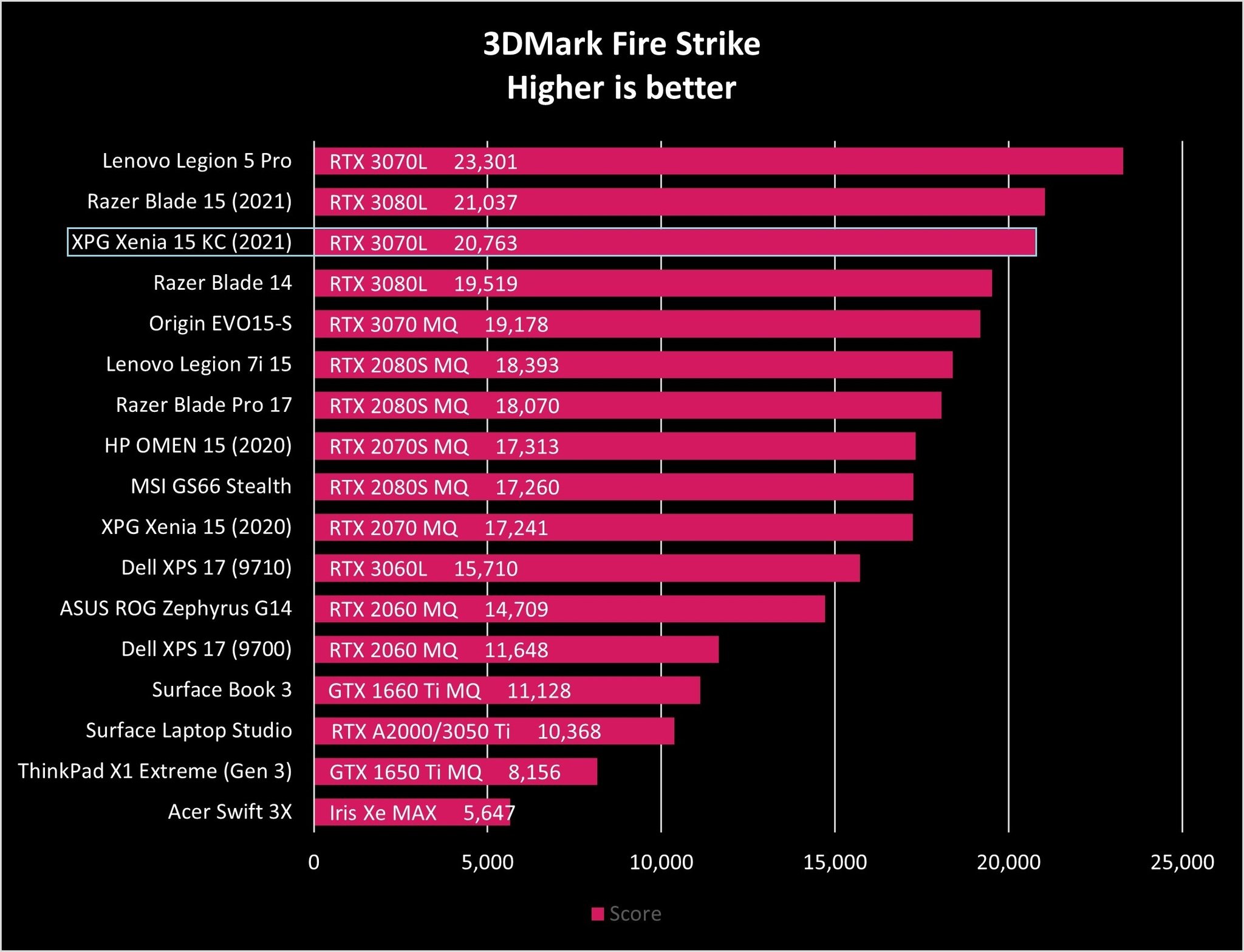
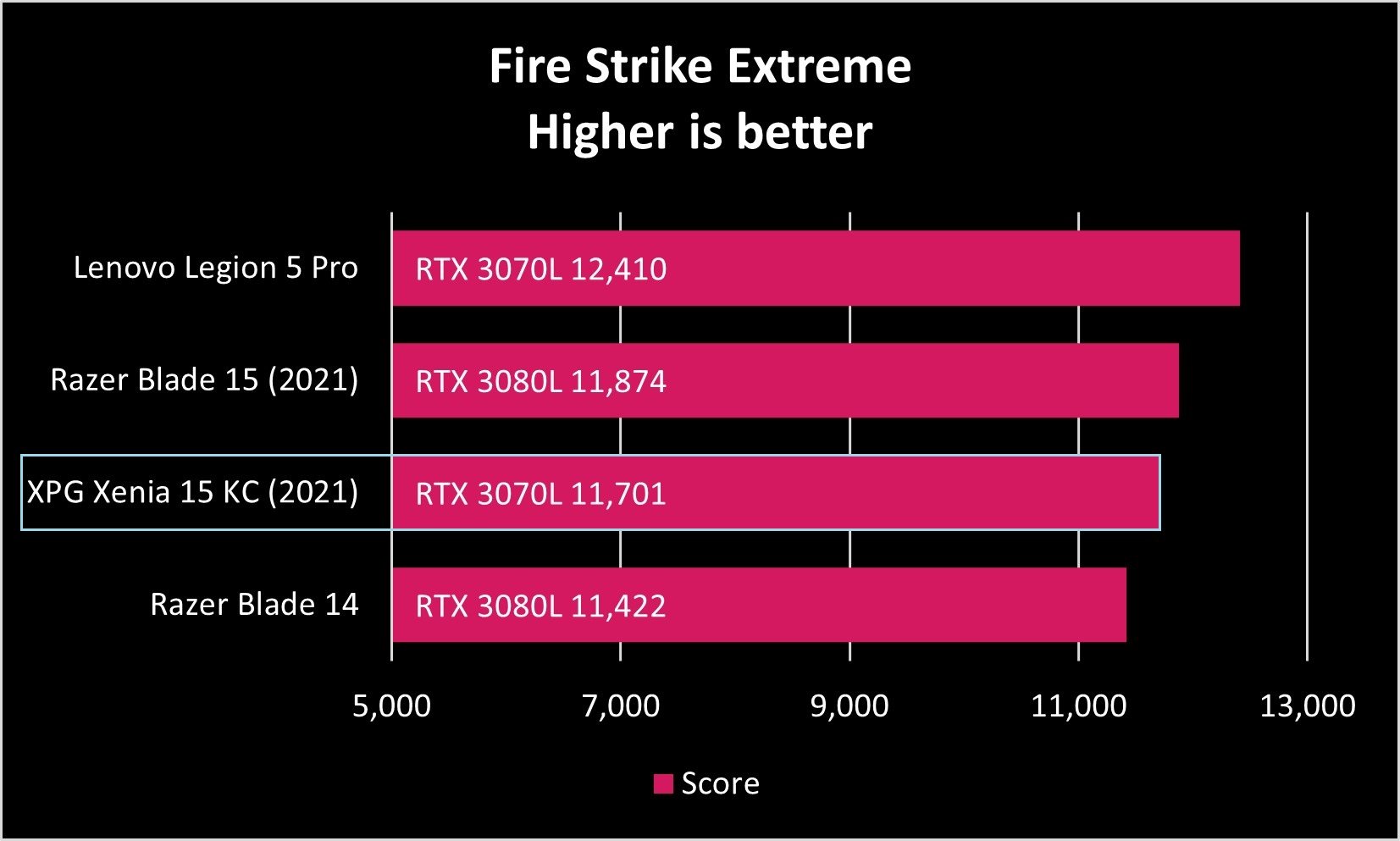
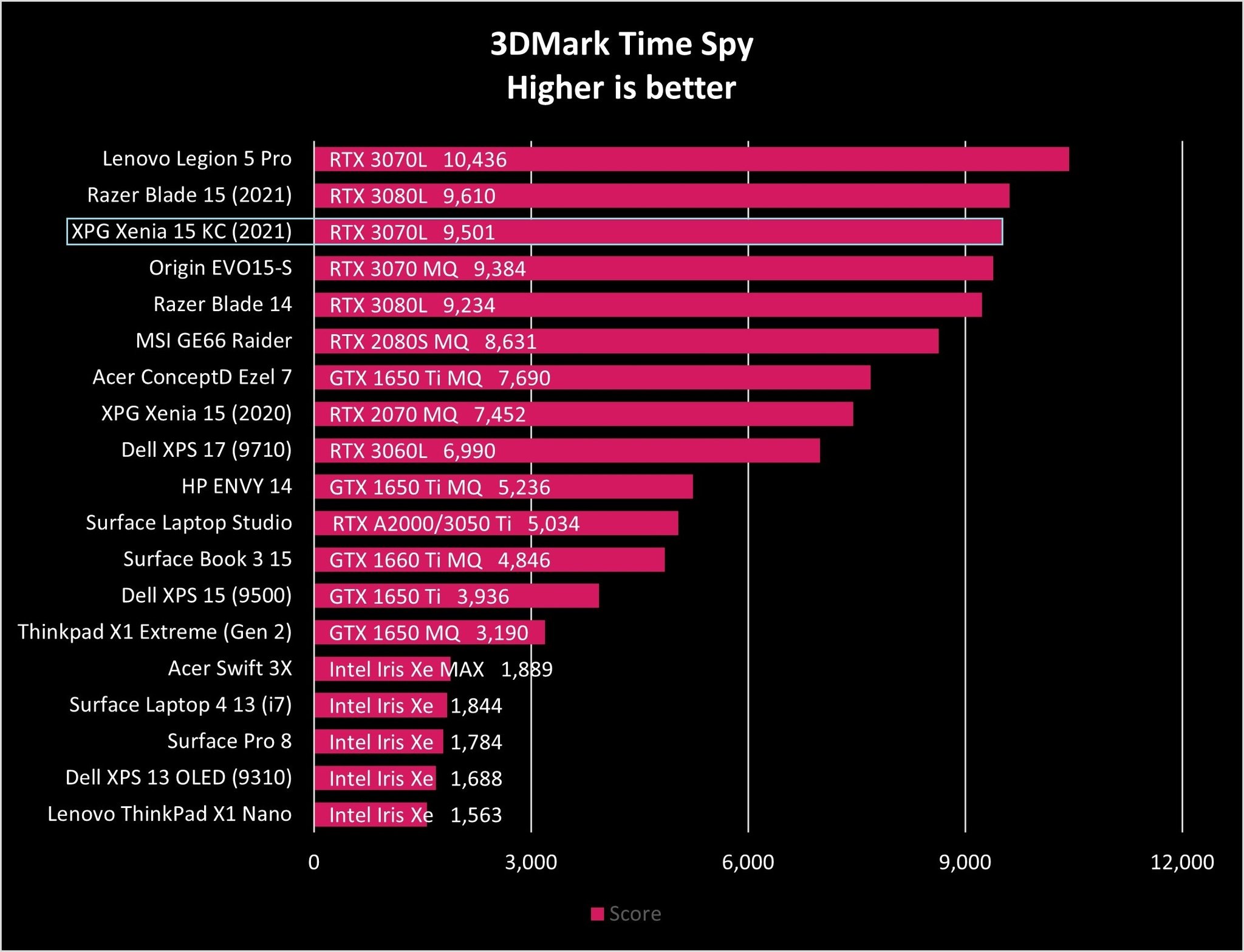
Actual gaming performance is just as impressive. With fairly robust ray tracing abilities thanks to the NVIDIA RTX GPU and DLSS compatibility with plenty of games, you're going to get a satisfying gaming experience. The QHD display looks quite crisp, and you can always scale down in resolution if you'd like a better framerate. I tested a number of demanding modern games to see how the Xenia 15 KC fares in real-world scenarios.
Note that in all tests I maxed the in-game settings and played at the native QHD resolution. DLSS is specified per game. I ran the first set of tests with the laptop on Performance mode (for both hardware and fans).
- Far Cry 5: 93 FPS average (108 max, 81 min)
- Red Dead Redemption 2: 66.6 FPS average (85 max, 34 min, DLSS Auto)
- Shadow of the Tomb Raider: 95 FPS average (DLSS, DX12)
I tested again with the laptop set to Balanced and fans set to Standard to see the difference in real-world gameplay performance.
- Far Cry 5: 84 FPS (98 max, 77 min)
- Red Dead Redemption 2: 59.5 FPS average (96 max, 28 min, DLSS Auto)
- Shadow of the Tomb Raider: 87 FPS average (DLSS, DX12)
As you can see from the above results, there's not a huge dip in performance if you choose to run the laptop on Balanced mode with quieter fans. If you're wearing a headset and don't care about noise you can always eke every last frame out of the hardware, but a much quieter (and cooler) experience isn't going to ruin your fun at all.
Huge 94Wh battery
XPG Xenia 15 KC: Performance and battery
Battery life in the Xenia 15 (2020) wasn't spectacular, and you shouldn't expect any miracles here either with the 2021 version. The large 94Wh battery lasted 6 hours and 21 minutes in PCMark 10's Modern Office rundown test, with the screen set to 50% brightness and the power profile set to Balanced (aka Windows 10 Better Performance). No complaints with this result, but it's not out of the ordinary.
Upgradeable SODIMM RAM and two M.2 SSD slots will help keep this laptop relevant longer into the future.
You could drop down to Battery Saver mode if you're only going about productivity work, which would no doubt boost battery life by another hour or two. Killing the RGB lighting and enabling Intel's enhanced power savings option in the Command Center app would also benefit here.
I also tested gaming battery life with PCMark's Gaming rundown test. With 50% screen brightness and the Intel power profile set to Balanced, the battery managed 1 hour and 53 minutes. This is pretty standard for a gaming laptop; if you're planning on having some fun while mobile, be sure to bring the AC adapter.
The bottom panel of the laptop is easy to remove with a Philips screwdriver; once gone it reveals the dual-fan setup, sizable heat pipes, and upgradeable hardware. There are two M.2 slots available, one filled from the factory and the other ready for an upgrade. The two SODIMM RAM slots are front and center as well for easy upgrades, as is the single M.2 slot used for the Wi-Fi 6 network card.
I ran some general benchmarks to see how the Xenia 15 KC fares for productivity work. Notice how fast the PCIe 4.0 SSD is compared to other laptops we've tested with PCIe 3.0 drives.
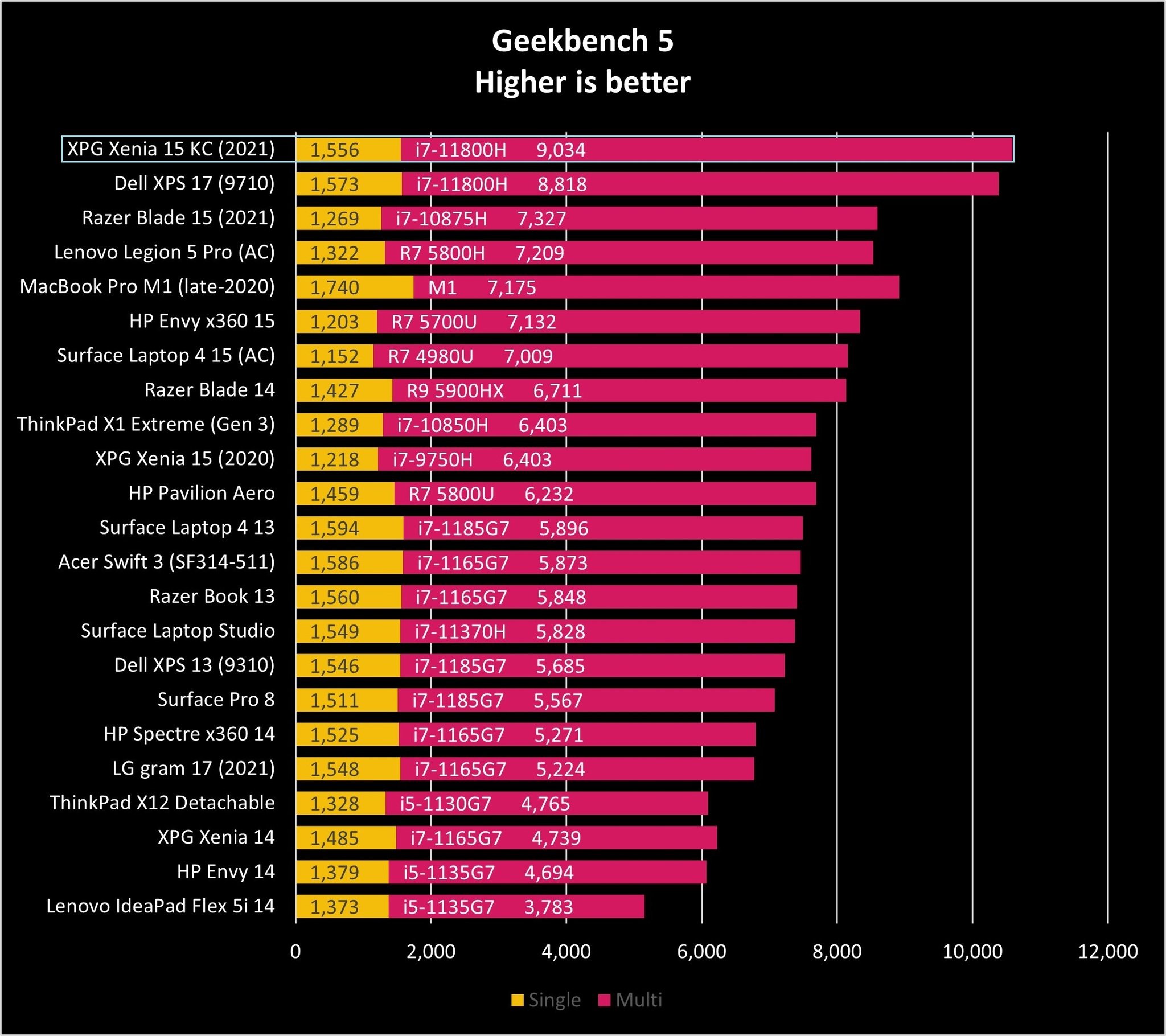
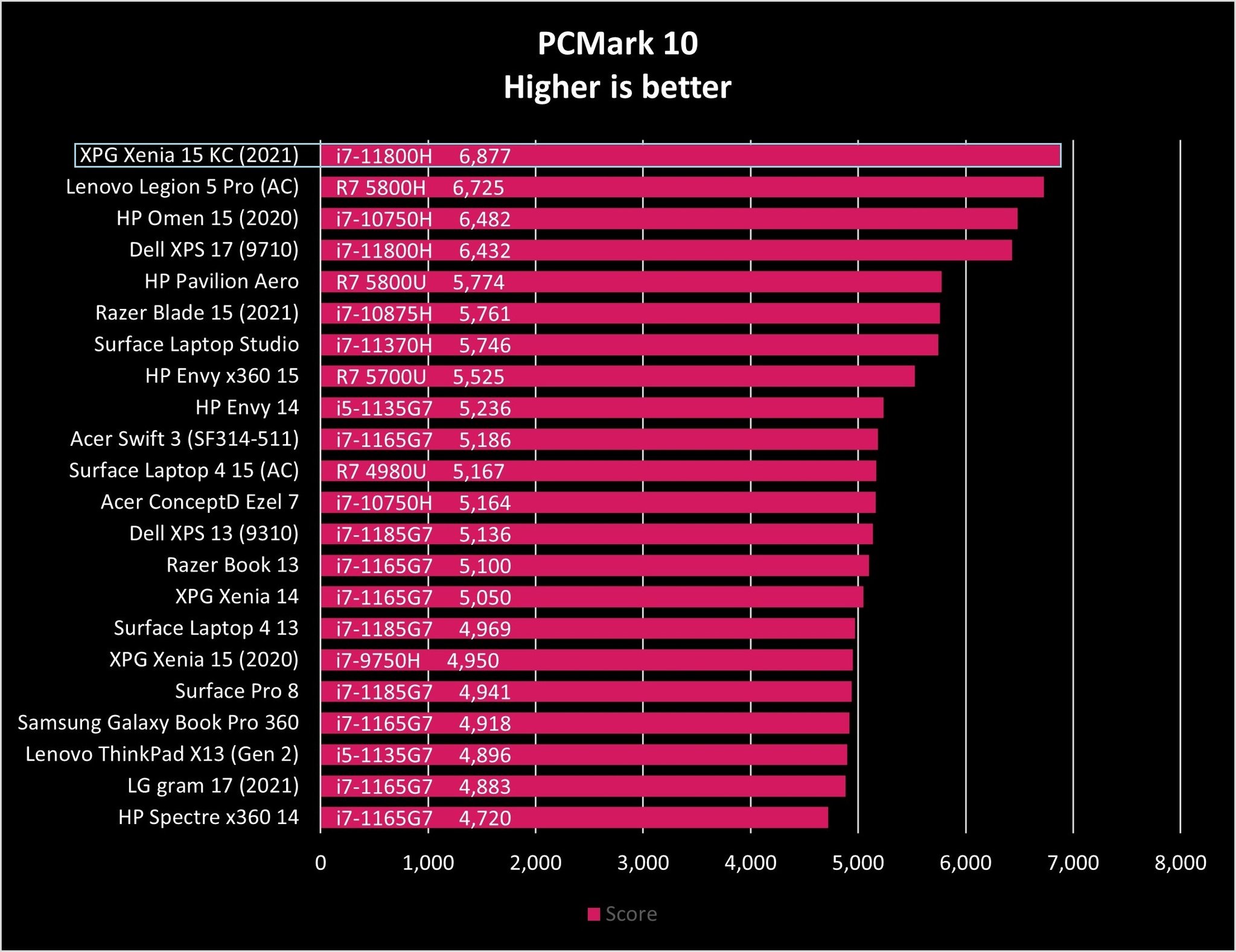
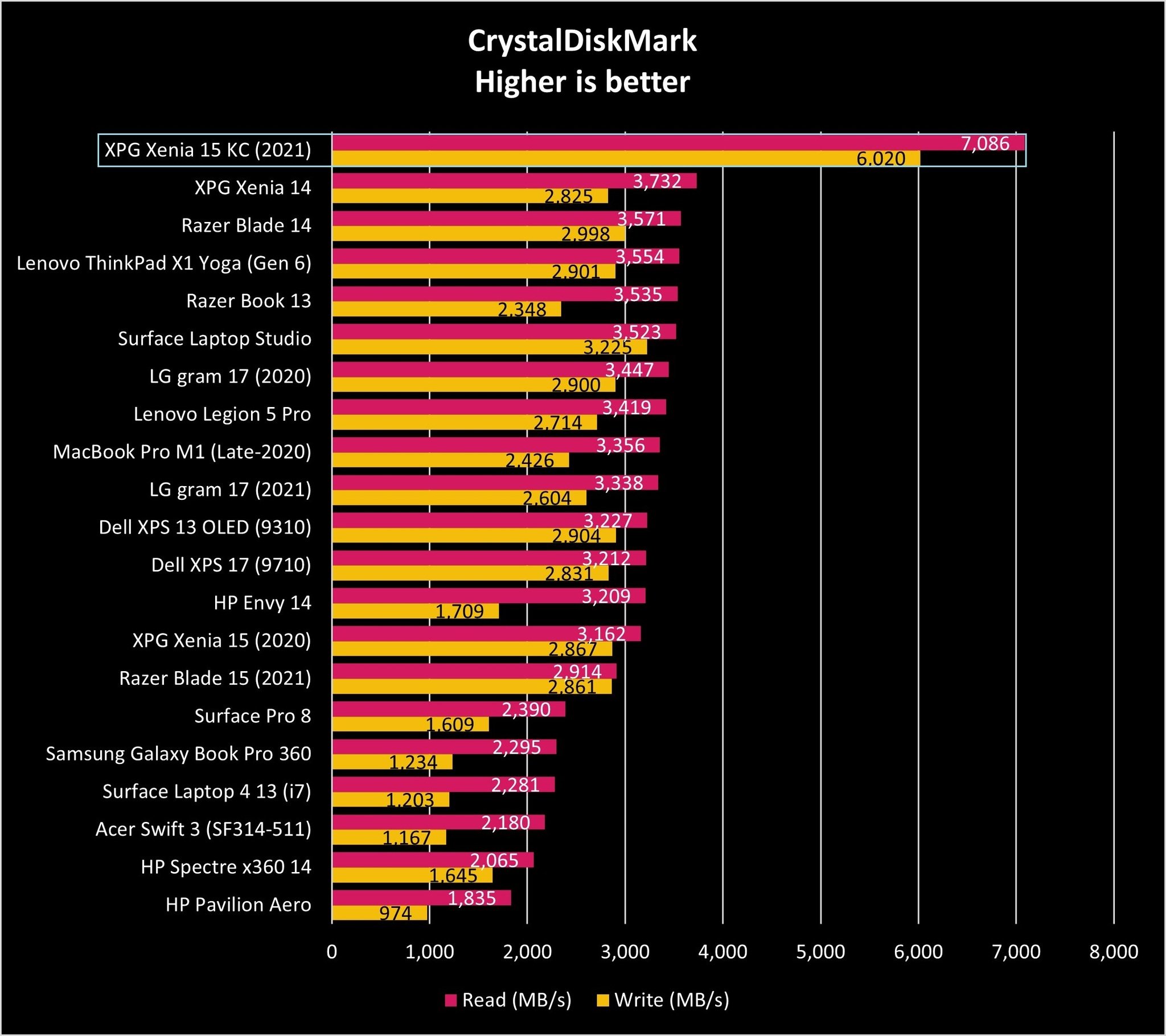
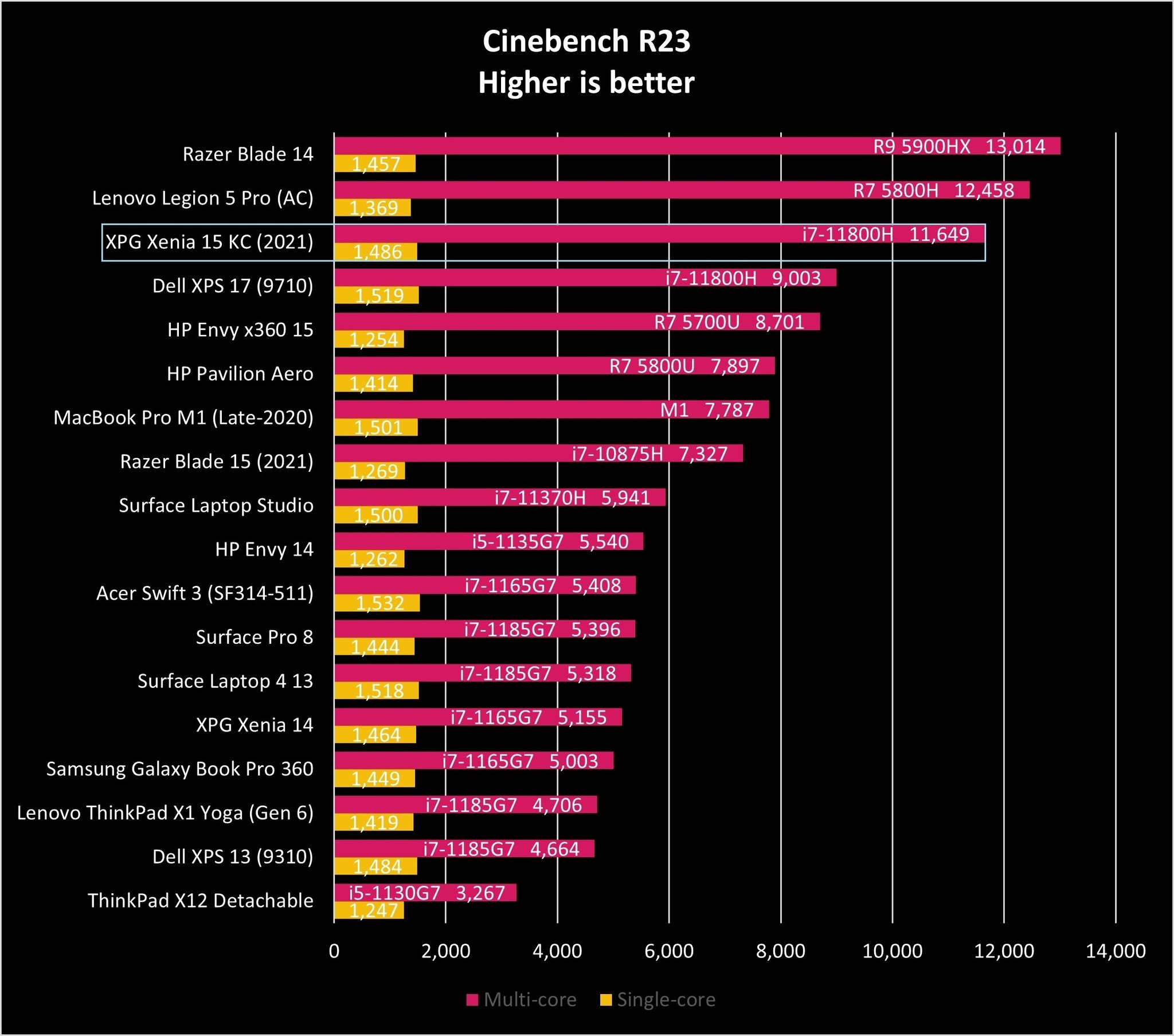
Heated battle
XPG Xenia 15 KC: Competition
The Xenia 15 KC reminds me a lot of the Razer Blade 15. The RGB mechanical-optical keyboard, the fairly thin matte black chassis, and the super performance are all comparable. You don't get the same high-level custom design (XPG is using a reference chassis after all), but it's the performance and price that a lot of people will look at. In that regard, the Xenia 15 KC certainly competes, as you can see in the performance graphs in the previous section. A Blade 15 with similar specs — though with 16GB of RAM and a PCIe 3.0 SSD — costs about $200 more than the Xenia 15 KC.
The Razer Blade 14 is a slightly smaller option with AMD hardware. A model with powerful Ryzen 9 5900HX CPU, NVIDIA RTX 3070 Laptop GPU, 16GB of RAM, 1TB SSD, and 14-inch QHD display with 165Hz refresh rate costs about $2,200. Chalk that up to the lower cost for AMD systems.
Lenovo's Legion 5 Pro is a larger option with a 16-inch display with 16:10 aspect ratio. A model with AMD Ryzen 7 5800H CPU, NVIDIA RTX 3070 Laptop GPU, QHD+ display with 165Hz refresh rate, 2TB SSD, and 16GB of RAM currently costs about $2,080 at Lenovo. That's a great deal, but Lenovo's prices fluctuate often.
Finally, the HP Omen 15 is a fantastic option if you're looking to keep prices down. A model with AMD Ryzen 7 5800H CPU, NVIDIA RTX 3060 Laptop GPU, 15-inch QHD display with 165Hz refresh rate, 512GB SSD, and 16GB of RAM costs about $1,700. You won't get quite as much power out of the RTX 3060, but saving $700 might just be worth it.
Be sure to have a look at our collection of the best gaming laptops if none of these are quite what you're looking for.
Building on a strong foundation
Should you buy the XPG Xenia 15 KC?
Who it's for
- Those who want a ton of high-end performance with NVIDIA DLSS and ray tracing.
- Those who prefer the crisp look of a 1440p (QHD) display.
- Those who like the feel of a mechanical optical keyboard (and the look of per-key RGB lighting).
- Those who can spend more than $2,000 on a new laptop.
Who it isn't for
- Those who don't mind a 1080p (FHD) display for better framerates and lower cost.
- Those who need a productivity laptop with lengthy battery life.
- Those who are looking to stick to a tight budget.
The Xenia 15 KC for 2021 builds greatly on the original model we first saw last year. The 11th Gen Intel Core i7-11800H and NVIDIA RTX 3070 Laptop GPU shred, and though there's some thermal throttling in the uncapped Performance mode, the Balanced power setting does a great job of keeping things cool without harming perfomance in any considerable way.
A PCIe 4.0 SSD isn't something you find in a lot of laptops, and the incredible speed is appreciated. Load times and transfers are not an issue. You can upgrade the SSD (or add a second drive to an additional M.2 slot) and you can upgrade the dual-channel SODIMM RAM with relative ease after removing the bottom panel. The chassis itself doesn't really stand out in any meaningful way, which a lot of people can appreciate. It's fairly lightweight, it's thin, and it has ports along the back for easier cable management. Thunderbolt 4 is a great addition, as is HDMI 2.1.
The optical mechanical keyboard has a satisfying feel and sound, plus the per-key RGB lighting gives the laptop some flair. There is some discrepancy in actuation, but I was able to get used to the pressure required after a few days. Not many gaming laptops bother with security measures, but the Xenia 15 brings an IR camera for Windows Hello and a Kensington lock slot.
Gaming on the QHD display is smooth thanks to the 165Hz refresh rate. Color accurate in the sRGB range, and there are plenty of tweaks available via the onboard software. The response time might not be low enough for some competitive gamers, but otherwise you should enjoy looking at it each time you open the lid.
The Xenia 15 KC's price is competitive with other high-end options out there, and its performance, as is evident in our testing, can certainly keep up (or even surpass) more expensive laptops. If you're planning on spending more than $2,000 on a new gaming laptop, definitely give this one some serious thought.

Bottom line: The Xenia 15 KC competes with high-end gaming laptops in terms of price and performance. Its feature set is quite generous, and while it does see some throttling when left wide open, the Balanced power mode keeps things in check without sacrificing much performance. If you're looking for a high-end gaming laptop, this one is definitely worth considering.

Cale Hunt brings to Windows Central more than nine years of experience writing about laptops, PCs, accessories, games, and beyond. If it runs Windows or in some way complements the hardware, there’s a good chance he knows about it, has written about it, or is already busy testing it.
